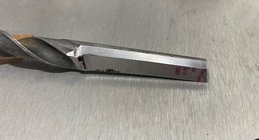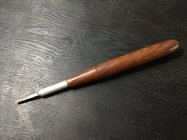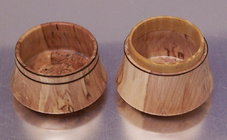Thank you so much I really appreciate all the recommendation.I’m sure the dway tool works well and would be easier to sharpen, but I would never pay $55+ shipping for something so easily made in the shop and not used a great deal. While a piece of m2 rod would be better, a dull drill bit could be used - put the twist end in the handle, and dont blue it while grinding, it will loose its temper. I use 2 - one at 30 deg per side, and one at 20deg per side.
I like to make my box bottoms with a round corner, sometimes the bottom is fully curved like a bowl. Easier to sand if needed and stuff comes out of the box easier. Just how I like ‘em, either way works.
As for scrapers, I use hi value ones (low price, good enough steel) from psi, benjamins best. They are thick and my hardness files say they are over 65 Rc. Buy the cheapest of the size desired, and grind the wanted shape, flat top or nrs.
i couldn’t go to sleep after I read your answer and found an old bit draw some shape in the bit and went to the grinder i ground it at 75° for the tip, do you think it’s maybe to high? And for the sides both angles give me 76° if it’s simetric each one is 38°.
Next box I turn I’ll try to do with round corner and bottom fully curved could it be done with the bowl gouge and skew or need a special scraper?
im attaching picture of my old bit now new diamond point, this week I’ll be making its handle.
thank you again have a great day











